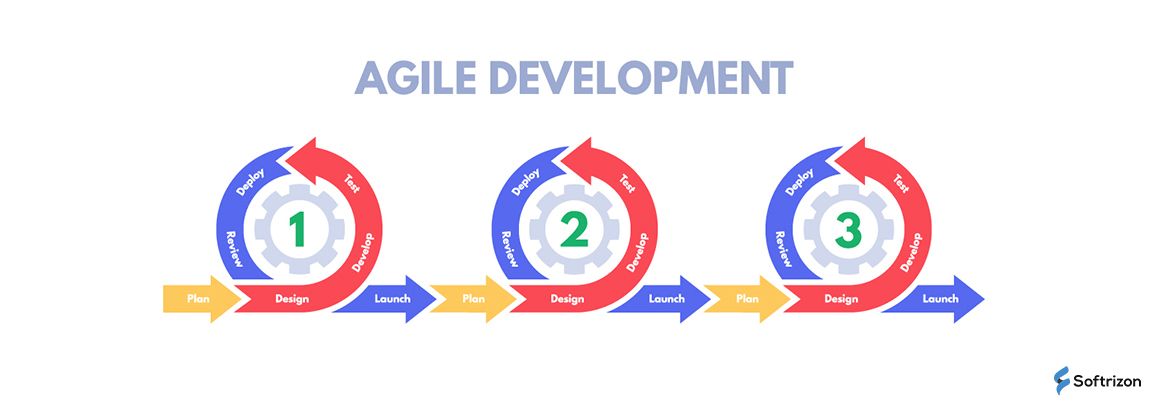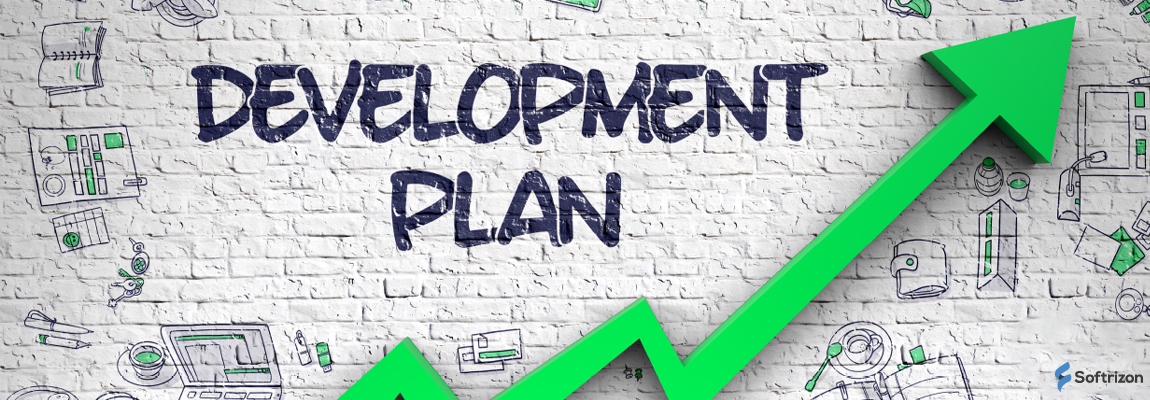For those outside the industry, software development can seem a little mysterious. You start with an idea and end with a smartphone app or a software suite, or a web application that does all these wonderful things. How do you get from point A to point Z, though?
The answer is: it varies.
There are many different software development methodologies. One of the oldest is called the waterfall method, or linear development. However, that is mainly being replaced today by Agile software development, which offers some pretty significant advantages over older methods and speaks directly to the pain points most companies today face, including shorter timelines, reduced tolerance for risk, and more.
What is Agile software development, and what benefits does it offer? How does it stack up to the waterfall method? Those are just some of the topics we’ll tackle in this blog post.
Join other businesses to get the latest insights from Softrizon delivered right to your inbox.
The Changing World of Software Development Methodologies
You’ve heard the word before. “Agile” is a buzzword, and it’s being used across industries. The problem is that it doesn’t necessarily carry the same connotations with each use. Some organizations are only using it in an attempt to cash in on its incredible popularity. It’s a bit like the rush to label everything as “gluten-free” even when the original product contained no gluten in the first place.
So, what is Agile? It was born in the early 2000s and got its start with software development. This means, even though today’s rule seems to be “agile-everything,” it is ideally suited (by design) for software development needs.

Agile and Its Predecessor
To really understand the Agile philosophy, it is important to understand what came before. Now, while there have been many different software development methods, the most commonly used was the waterfall method, also called the linear method. This was a direct translation from the realm of physical product development to the world of software development and looked like this:
It follows a linear, predefined, logical flow of progression. It’s a bit like building a house. You start with the foundation, then comes the flooring, the walls, and then the roof at the end. The bad news is that, while it looks logical, it actually doesn’t work very well. When you follow the waterfall method, you often end up with time and cost overruns, bugs that were missed, and many other issues. In comparison, the Agile software development method looks more like this:

The “design, develop, test” section is actually a loop that can be repeated as many times as necessary. In fact, while the waterfall version usually culminates in “finished version 1”, the Agile method culminates with “finished version X,” where X can be whatever number is necessary to achieve functionality, flow, and feature-related goals. This makes it an excellent fit for virtually all software development types, from long-term projects to developing MVPs.
The Benefits of Agile Software Development
While some of the benefits offered by Agile software development can be seen in the information above, we need to take a deeper dive to truly elaborate on all of them.
1. Effective Change Management
Change occurs in virtually every software development project. In a traditional waterfall method, any change is cause for concern and a source of lost time and increased costs. Often, a change proposed late in the game will require that the development team restart almost from the beginning.
With the Agile method, that’s not the case. This is because it focuses on continuous delivery and ongoing iteration. The design, development, and test loop becomes simpler to integrate change without upsetting the entire project. That ability to manage change has knock-on benefits, such as reducing the overall project timeline, cutting costs, and eliminating hassles. It also helps to eliminate software bugs related to changes.
2. Better Client-Team Interaction
Agile software development is an important tool for improving the interaction between the software development company and the client. In the waterfall method, most interaction occurs during the initial ideation and planning phases. However, with Agile, interaction occurs as necessary throughout the development lifecycle. This speaks to engagement, but also accuracy, and, ultimately, to client satisfaction and product quality.
3. Focus on What Matters
In the waterfall software development method, production runs according to the plan outlined in the beginning. Within Agile software development, though, it is possible to focus on the highest priorities first. This is one reason that Agile is such a beneficial option for creating MVPs, where priority functionality is the most important.
4. Real-Time Course Corrections
It’s all too easy to put your head down and focus on plowing through a project, only to find at the end that you have been off course for who knows how long. That causes serious problems, including increasing costs, additional time to completion, and more. However, Agile uses what are called “sprints,” which break a project up. Before and after each sprint, it is possible to check for alignment and make any course corrections needed in real-time.
5. Collaboration
Collaboration is essential to achieving projected outcomes while also leveraging the experiences, insight, and knowledge of individuals involved with the project. In a traditional software development flow, everyone is responsible for their own area of focus. However, with Agile software development, collaboration becomes the rule rather than the exception. This allows the development team to achieve even better outcomes, find creative workarounds to problems, predict issues well ahead of time, and more.
6. Visibility Throughout the Project
There’s a major disconnect for project owners after the onboarding and planning sessions where the software development company takes over. Often, there is limited communication between this point and approval for the wireframe or prototype. With the Agile method, though, clients have complete visibility from the very beginning of the project all the way through rollout and maintenance. Because of that, clients can provide feedback at any point along the way as the application progresses.
7. More Accurate Planning
All software development strategies include some degree of guesswork or estimation. For instance, a software development company might say it will take them six months to develop a mobile app. However, the reality might be that it will take them six and a half or seven months or only take them five months.
The challenge here is that the client must plan other activities around the completion of the app. They need to develop marketing collateral, plan to get the app to testers for their feedback, and so much more. With inaccurate planning, that can be problematic. With the Agile method, sprints allow the development team to predict their speed accurately. Based on that, clients can more precisely plan their supporting efforts. Imagine being able to confidently schedule a marketing campaign to promote your new app while the app is still in the development stage!
8. Essential Transparency
Without transparency, software development projects can crumble and grind to a halt. With Agile, transparency is a high point. This allows everyone, from stakeholders to developers, to be on the same page at the same time. This way, everyone knows what is being done, when, why, and who is responsible for making what decisions.
Where Can It Work?
With a better understanding of Agile software development’s advantages, it becomes important to answer where it can be applied. There’s good news – virtually all software, mobile app, and web app development projects can follow the Agile methodology. There’s an Agile method for almost everything, from Scrum to Kanban to dual-track Agile and everything in between.
The catch is finding a software development company that embraces Agile development. With the right partner, you can leverage not just industry experience and a seasoned team of software developers, but expertise with Agile development and using it with a variety of different project types.
Is Agile Right for You?
Whether you’re in need of a new mobile app or you want to develop a web application for your website visitors, Agile software development delivers the benefits and capabilities that you need and deserve. However, not all software development companies follow this methodology, even if they claim to do so. Agile is more than a set of practices – it’s a mindset.
At Softrizon, we specialize in helping small and medium-sized businesses compete with the “big boys” on even footing. One way we do that is through Agile software development. Our outsourced software development capabilities help you achieve more from mobile apps to web applications.
Contact us today to learn more about our outsourced software development capabilities and how we can help you grow and thrive.




